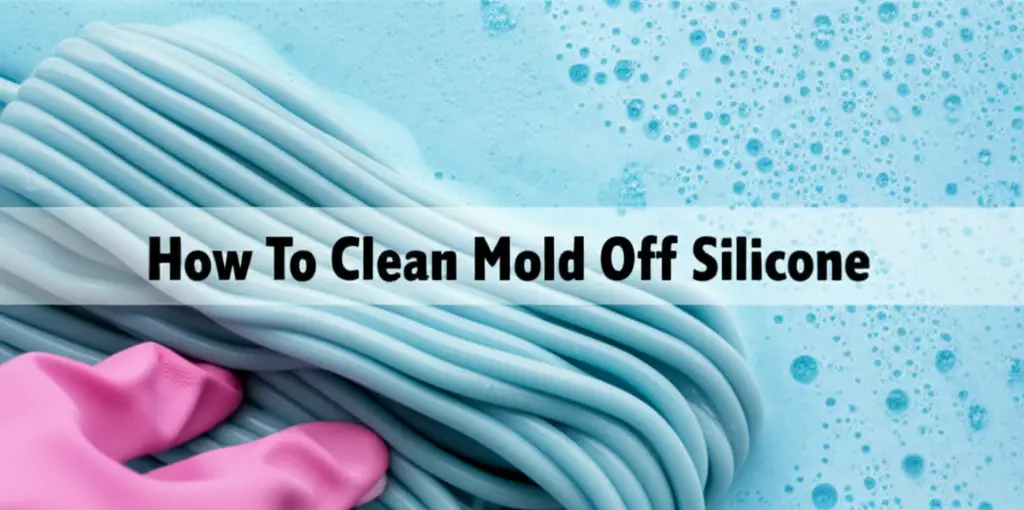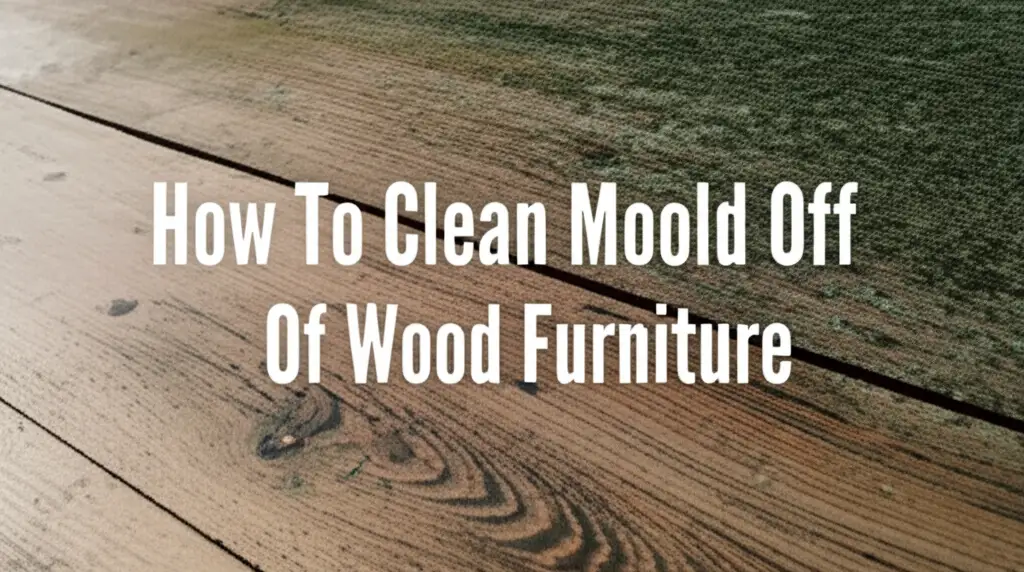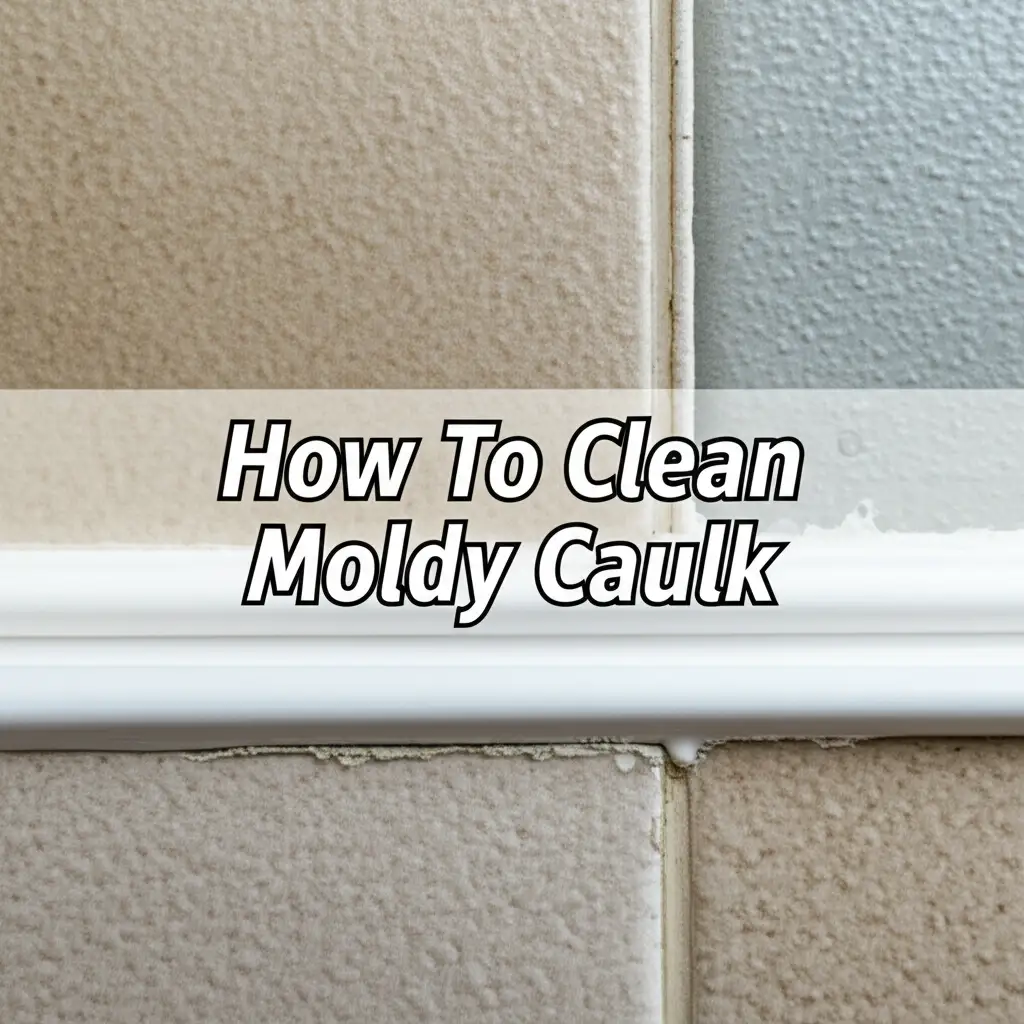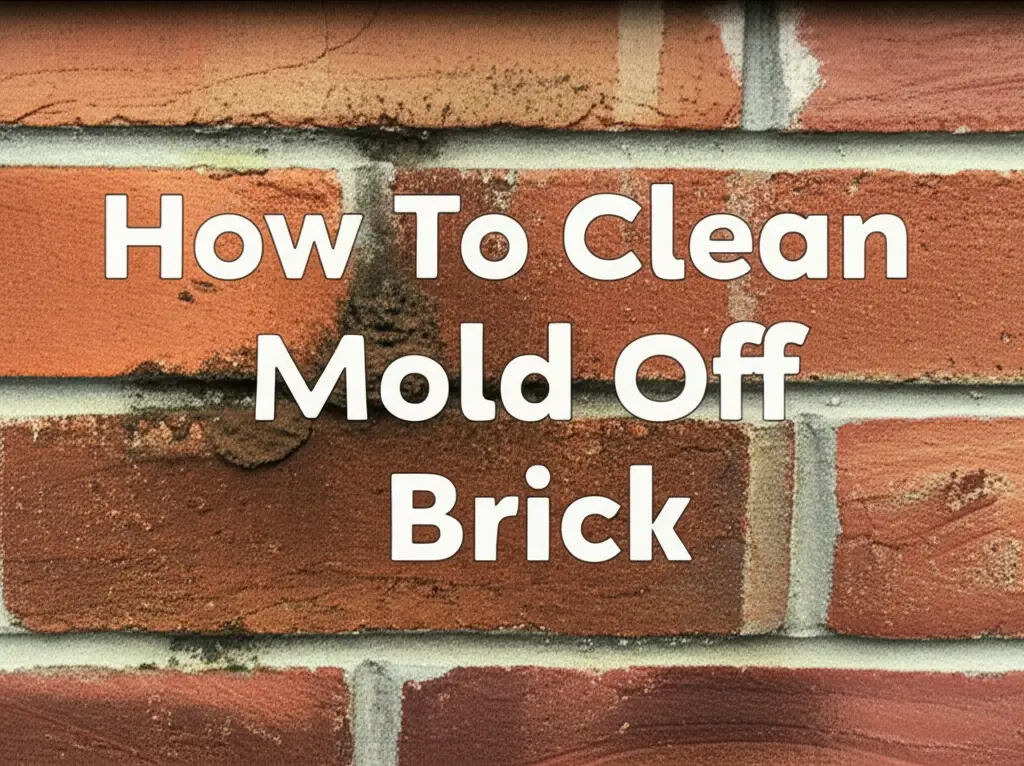· Home Cleaning · 18 min read
How To Clean Mold Off Silicone

How to Clean Mold Off Silicone: A Complete Guide
Mold is a common household problem. It often appears as black or green spots. You can find it in damp areas like bathrooms and kitchens. Silicone caulk and sealants are prime targets for mold growth. Learning how to clean mold off silicone is a key skill for a healthy home.
Ignoring mold on silicone can lead to bigger problems. It can spread and damage surfaces. Mold also affects indoor air quality. This article gives you simple steps to remove mold. We will cover safe cleaning methods and tips to prevent mold from returning. Get ready to make your silicone surfaces clean again.
Takeaway
- Identify the type and severity of mold on your silicone.
- Always wear protective gear like gloves and masks.
- Start with natural solutions for light mold, such as vinegar or baking soda.
- Use stronger chemical cleaners like bleach or hydrogen peroxide for stubborn mold.
- Clean mold off silicone thoroughly and ensure good ventilation.
- Prevent future mold growth by improving air circulation and drying surfaces.
To clean mold off silicone, first ensure proper ventilation and wear protective gear. For light mold, use a paste of baking soda and water, scrub, and rinse. For stubborn mold, apply a diluted bleach solution or hydrogen peroxide, let it sit, scrub, and rinse well. Always dry the area completely afterward to prevent mold return.
Understanding Silicone Mold: Why It Forms and Where to Find It
Mold on silicone is a common sight in many homes. It usually looks like black, green, or brown spots. These spots appear on caulk lines in bathrooms, kitchens, and around windows. Understanding why mold forms helps you fight it better. I often see it hiding in plain sight.
Mold thrives in environments with high moisture. Silicone is water-resistant but not mold-proof. Tiny mold spores float in the air. When they land on damp silicone surfaces, they start to grow. This happens quickly in warm, humid conditions. This makes bathrooms a prime location for mold. You will often see mold on how to clean mold from bathroom ceiling and around tubs and showers.
Poor ventilation is a big reason for mold growth. When moisture cannot escape, it settles on surfaces. This creates the perfect breeding ground for mold. Leaks or condensation also contribute to the problem. If you notice mold on your how to clean mold off window sills, condensation might be the cause. Mold can also grow in less obvious places, like around sinks or washing machines.
Silicone provides a slightly porous surface for mold to cling to. Even though silicone is smooth, microscopic pores exist. These tiny spaces trap moisture and organic matter. This gives mold something to feed on. Regular cleaning removes these food sources. It helps keep your silicone clean and mold-free.
Essential Safety Measures Before You Start Cleaning
Cleaning mold requires careful preparation. Your safety is the top priority. Mold spores can irritate your lungs and skin. Some molds are more harmful than others. Taking precautions helps you stay safe during the cleaning process.
First, ensure the area has good airflow. Open windows and doors. Use an exhaust fan if you are in a bathroom or kitchen. Good ventilation reduces your exposure to mold spores. It also helps disperse fumes from cleaning products.
Wear protective gear. Gloves are a must to protect your hands from mold and cleaners. Safety glasses or goggles protect your eyes from splashes. An N-95 respirator mask is important for protecting your lungs. This mask filters out mold spores. Do not use a simple dust mask; it offers little protection against mold.
Clear the cleaning area of personal items. Remove toothbrushes, towels, and food items. Cover nearby surfaces if you are using strong cleaners. This prevents accidental damage or contamination. Having a clear workspace also makes the job easier. You can then focus on cleaning mold off silicone without distractions.
Always follow product instructions when using chemical cleaners. Mix solutions in a well-ventilated area. Never mix bleach with ammonia-based cleaners. This creates toxic fumes. Keep children and pets away from the cleaning area. Proper safety steps make mold removal much safer for everyone.
Gentle Approaches: Natural Remedies for Mild Silicone Mold
When dealing with light mold on silicone, natural cleaners are a great start. They are safer for your home and the environment. These methods work well for surface mold. They do not contain harsh chemicals. I often reach for these first.
White Vinegar: White vinegar is a powerful natural disinfectant. It can kill many types of mold. It is also safe for most surfaces, including silicone. Its acidic nature helps break down mold.
- How to use:
- Pour undiluted white vinegar into a spray bottle.
- Spray the moldy silicone surface thoroughly.
- Let the vinegar sit for at least an hour.
- Scrub the area with a stiff brush or old toothbrush.
- Rinse the silicone with clean water and dry it completely. Vinegar leaves a distinct smell. This smell goes away once the area dries.
Baking Soda Paste: Baking soda is a mild abrasive and a natural fungicide. It helps scrub away mold stains. It also neutralizes odors. This makes it ideal for cleaning mold off silicone in kitchens and bathrooms.
- How to use:
- Mix baking soda with a small amount of water to form a thick paste.
- Apply the paste directly to the moldy areas on the silicone.
- Let the paste sit for 15-30 minutes.
- Scrub the paste and mold away with a brush.
- Rinse thoroughly with water and dry the surface. You can also spray vinegar over the baking soda. This creates a fizzing action. It helps lift stubborn mold.
Hydrogen Peroxide: Hydrogen peroxide is another effective natural mold killer. It is a safer alternative to bleach. It works by oxidizing the mold. Use a 3% hydrogen peroxide solution for household cleaning.
- How to use:
- Pour 3% hydrogen peroxide into a spray bottle.
- Spray the moldy silicone until it is fully saturated.
- Let it sit for at least 10 minutes.
- Scrub the area to remove mold and stains.
- Rinse well with water and dry thoroughly. Hydrogen peroxide is good for areas where you want to avoid strong fumes. You can also use it for general how to clean mold out of coffee maker where dampness is an issue.
These gentle methods work best for surface mold. For deeply embedded or widespread mold, you might need stronger solutions. Always test any cleaner on a small, hidden spot first. This ensures it does not damage your silicone.
Tough Stains: Chemical Solutions for Stubborn Silicone Mold
Sometimes, natural methods are not enough. Stubborn mold often embeds itself deeper into silicone. This requires more powerful chemical cleaners. These solutions effectively kill mold and bleach out stains. Always use these with extreme caution and proper ventilation.
Bleach Solution: Bleach (sodium hypochlorite) is a strong disinfectant. It kills mold and removes discoloration. It is very effective for white or light-colored silicone. Bleach can be harsh, so use it sparingly and carefully.
- How to use:
- Create a solution of 1 part bleach to 10 parts water.
- Apply the solution to the moldy silicone using a spray bottle or a cloth.
- For severe stains, you can soak cotton balls in the solution. Place them directly on the mold.
- Let it sit for 15-30 minutes. Do not leave it on for too long.
- Scrub with a stiff brush.
- Rinse the area thoroughly with clean water.
- Dry the surface completely. Remember, never mix bleach with ammonia or other cleaners. This creates dangerous gases. Bleach is good for how to clean mold from washing machine areas too.
Mold and Mildew Remover Products: Many commercial mold and mildew removers are available. These products contain stronger chemicals than bleach. They are designed to penetrate and kill stubborn mold. Read the product label carefully for specific instructions.
- How to use:
- Ensure the area is well-ventilated.
- Apply the product directly to the moldy silicone.
- Follow the manufacturer’s recommended dwell time. This is usually 5-15 minutes.
- Scrub the area vigorously with a brush.
- Rinse thoroughly with clean water.
- Dry the silicone completely. These products often contain strong fumes. Always wear a respirator mask and gloves when using them. They are good for persistent black mold stains on silicone.
Consider Re-Caulking: If mold has deeply penetrated the silicone, cleaning might not be enough. The mold spores can grow beneath the surface. In such cases, replacing the silicone caulk is the best solution. This is common if the caulk is old or damaged.
- Steps for re-caulking:
- Remove all the old, moldy caulk using a utility knife or caulk remover tool.
- Clean the surface thoroughly to remove any remaining mold. Use a bleach solution if needed.
- Let the area dry completely before applying new caulk.
- Apply new silicone caulk smoothly and evenly. This ensures a fresh, mold-free seal. It also prevents mold from reappearing quickly. Re-caulking provides a long-term fix.
Step-by-Step Guide: Cleaning Mold Off Silicone Effectively
Cleaning mold off silicone requires a methodical approach. Follow these steps for the best results. I find this systematic process makes the job manageable.
Gather Your Tools and Supplies
Before you begin, ensure you have everything ready. This saves time and ensures safety.
- Protective Gear: Rubber gloves, safety glasses, N-95 respirator mask.
- Cleaning Solutions: White vinegar, baking soda, 3% hydrogen peroxide, or diluted bleach solution (1:10).
- Application Tools: Spray bottle, small bowl for mixing.
- Scrubbing Tools: Stiff-bristled brush, old toothbrush, scrub sponge.
- Cleanup Tools: Clean cloths or sponges, bucket of clean water, old towels.
Prepare the Area
Proper preparation makes the cleaning process safer and more effective.
- Ventilate the space: Open windows and doors. Turn on exhaust fans. Air circulation is key.
- Clear the area: Remove anything near the silicone. This includes toiletries, decor, or food items.
- Protect surrounding surfaces: If using strong chemicals, cover adjacent surfaces with plastic sheeting or old towels. This prevents damage or discoloration.
Choose Your Cleaning Method
Select a cleaner based on the severity of the mold.
- Light Mold: Start with white vinegar, baking soda paste, or hydrogen peroxide. These are less harsh.
- Stubborn Mold: Use a diluted bleach solution or a commercial mold remover. These are more effective for deep stains.
Apply the Cleaner
Apply your chosen cleaning solution directly to the moldy silicone.
- For sprays (vinegar, hydrogen peroxide, bleach solution): Spray generously onto the mold. Ensure the silicone is fully saturated.
- For paste (baking soda): Apply a thick layer of paste over the mold.
- For deep stains: For bleach, you can soak cotton balls and press them onto the moldy caulk. This allows for concentrated contact.
Let It Sit
Allow the cleaning agent time to work. This breaks down the mold.
- Natural cleaners: Let sit for 30 minutes to an hour.
- Bleach or commercial cleaners: Follow product instructions, usually 10-30 minutes. Do not let it dry on the surface.
Scrub Away the Mold
After the dwell time, it is time to scrub.
- Scrub vigorously: Use your stiff brush or old toothbrush. Apply firm pressure.
- Focus on stained areas: Pay extra attention to any remaining black or green spots. The goal is to lift and remove all mold.
- Reapply if needed: If mold remains, apply more cleaner and scrub again.
Rinse and Dry
This step is critical for preventing mold from returning.
- Rinse thoroughly: Use clean water and a clean cloth or sponge to wipe away all cleaning residue and loosened mold. Rinse several times until no cleaner remains.
- Dry completely: Use a dry cloth to wipe down the silicone. Air dry the area as much as possible. You can use a fan to speed up drying. Ensure no moisture remains.
Following these steps helps you effectively clean mold off silicone. It leaves your surfaces looking fresh and clean.
Preventing Mold on Silicone: Long-Term Strategies
Cleaning mold is a good first step, but prevention is key. Mold loves moisture. Controlling moisture in your home helps prevent future mold growth on silicone. I always tell people that good habits are the best defense.
Improve Ventilation
Good airflow is vital in areas with silicone, like bathrooms and kitchens.
- Use exhaust fans: Turn on your bathroom fan during and after showers for at least 30 minutes. This removes humid air. Do the same when cooking.
- Open windows: Whenever possible, open windows to create cross-ventilation. This is especially helpful after cleaning.
- Consider de-humidifiers: In very humid climates, a de-humidifier can greatly reduce overall moisture levels. This makes it harder for mold to grow.
Keep Surfaces Dry
Mold cannot grow without water. Drying surfaces promptly is a simple yet effective strategy.
- Wipe down after use: After showering, wipe down shower walls, tubs, and silicone seals. Use a squeegee or a dry cloth.
- Address spills immediately: Clean up any water spills around sinks or on floors right away.
- Fix leaks: Repair leaky faucets, pipes, or showerheads quickly. Even small leaks provide constant moisture.
Regular Cleaning and Maintenance
Consistent cleaning prevents mold spores from taking hold.
- Weekly wipe-down: Include silicone areas in your regular cleaning routine. Wipe them down with a general bathroom cleaner or a mild vinegar solution.
- Check for early signs: Look for small spots of mold. Address them immediately before they spread. Early intervention makes cleaning much easier.
- Use mold-resistant caulk: When replacing silicone caulk, choose products labeled “mold-resistant” or “mildew-resistant.” These contain additives that inhibit mold growth.
Reduce Humidity Indoors
Beyond direct ventilation, consider overall indoor humidity.
- Monitor humidity levels: Use a hygrometer to check indoor humidity. Aim for levels between 30% and 50%.
- Vent clothes dryers to the outside: Ensure your dryer vents properly. Indoor venting adds a lot of moisture to your home.
- Avoid drying clothes indoors: If possible, dry laundry outside or in a well-ventilated area.
By adopting these preventative measures, you can significantly reduce the chances of mold returning. A proactive approach helps you maintain clean, healthy silicone surfaces for a long time. It saves you the trouble of repeated mold removal.
When to Call a Professional for Silicone Mold
While many mold problems are DIY-friendly, some situations require expert help. Knowing when to call a professional protects your health and your home. There are times when I would definitely defer to an expert.
Extensive Mold Growth: If mold covers a large area, like several square feet, a professional is usually necessary. This includes mold spread across multiple silicone seams or extending to walls. Large mold infestations can release many spores. Professionals have the right equipment and training to handle large areas safely. They can identify the cause and ensure thorough removal.
Mold After Water Damage: If the mold on your silicone appeared after a flood or major leak, it indicates a deeper issue. Mold can hide behind walls or under flooring. Professionals specialize in water damage restoration. They can dry out the affected areas completely. This prevents mold from returning. Addressing the source of the water is key to lasting mold remediation.
Health Concerns: If anyone in your home experiences health problems related to mold, call an expert. Symptoms include respiratory issues, allergies, or persistent coughing. Some people are more sensitive to mold. Professionals can assess air quality and identify the mold type. They ensure the removal process minimizes health risks.
Recurrent Mold: You might clean mold off silicone, only for it to return quickly. This often means the root cause of the moisture is not fixed. A professional can identify hidden leaks, ventilation issues, or other structural problems. They provide long-term solutions. Repeated mold growth can also indicate a persistent moisture source you cannot see.
Black Mold Identification: While many molds are black, some types, like Stachybotrys chartarum, are toxic. If you suspect black mold, it is safer to call a professional. They can test the mold and confirm its type. They follow strict safety protocols for removal. Do not disturb potential toxic mold without proper protective gear.
Lack of Proper Equipment: Mold remediation often requires specialized tools. These include HEPA vacuums, air scrubbers, and industrial-strength dehumidifiers. If you do not have access to these, a professional team does. They also safely dispose of contaminated materials. Their equipment ensures a more complete cleanup.
Calling a professional might cost money, but it saves time and prevents health risks. It ensures the mold is gone for good. It also protects your home from further damage. Consider it an investment in your property and well-being.
The Long-Term Benefits of Keeping Silicone Mold-Free
Maintaining mold-free silicone surfaces offers many benefits. It is not just about aesthetics. A clean home contributes to better health and protects your property value. I always feel better in a clean space.
Improved Indoor Air Quality: Mold spores release into the air. Breathing them in can cause allergies, asthma attacks, and other respiratory problems. Keeping silicone mold-free reduces airborne spores. This leads to cleaner air in your home. This is especially important for children, the elderly, and those with existing respiratory conditions. A clean breathing environment supports overall health.
Enhanced Home Appearance: Moldy silicone looks unsightly. It makes bathrooms and kitchens appear dirty, even if other areas are clean. Removing mold instantly brightens these spaces. It gives your home a fresh, well-maintained look. This boosts curb appeal and your personal enjoyment of your living space. First impressions matter for visitors too.
Prevention of Structural Damage: Mold needs moisture to grow. Constant moisture on silicone can lead to bigger problems. It can seep into walls, subflooring, and grout. This causes rot, structural damage, and costly repairs. By keeping silicone clean, you protect the underlying structures. You prevent water damage that might require extensive renovation. This proactive approach saves significant money in the long run.
Increased Property Value: A home free of mold issues is more attractive to potential buyers. Mold problems can reduce property value. They raise red flags during home inspections. Maintaining mold-free silicone shows that you care for your home. It ensures your property holds its value. A clean, healthy home is always a better investment.
Odor Elimination: Mold often produces a musty, unpleasant odor. This smell permeates the air and can make your home feel damp. Removing mold from silicone eliminates this source of odor. Your home will smell fresh and clean. This contributes to a more pleasant living environment for everyone.
Extended Lifespan of Materials: Mold breaks down the materials it grows on. This includes silicone caulk. Over time, mold can degrade the sealant. This makes it less effective at preventing water penetration. Regular cleaning and prevention extend the life of your silicone. You avoid the need for frequent re-caulking. This saves on material and labor costs.
Investing time in cleaning and preventing mold on silicone pays off. It creates a healthier, more beautiful, and valuable home. It is a simple step with significant returns.
Frequently Asked Questions About Cleaning Mold Off Silicone
What causes mold to grow on silicone caulk?
Mold grows on silicone caulk primarily due to moisture and humidity. Silicone is water-resistant but not mold-proof. Microscopic mold spores in the air land on damp caulk. If surfaces stay wet, mold finds a food source in soap scum or dirt. Poor ventilation traps moisture, creating an ideal breeding ground for mold.
Is mold on silicone dangerous to my health?
Mold on silicone can cause health issues, especially for sensitive individuals. It releases spores that can trigger allergies, asthma, and respiratory irritation. While typical household mold is not always “toxic,” prolonged exposure is not healthy. It is always best to remove mold to maintain good indoor air quality.
Can I use bleach on all types of silicone?
You can generally use diluted bleach on most silicone caulk and sealants. It effectively kills mold and removes stains. However, use caution. Bleach can sometimes lighten colored silicone over time or weaken it if used too strong or too often. Always test a small, hidden area first to check for discoloration.
How often should I clean silicone caulk to prevent mold?
The frequency of cleaning depends on humidity and usage. In high-moisture areas like showers, wipe down silicone after each use. A thorough cleaning with a mold inhibitor, like diluted vinegar, once a week or every two weeks is good. If mold appears, clean it immediately. Regular maintenance prevents heavy buildup.
What if the mold keeps coming back on my silicone?
If mold consistently returns, it suggests an ongoing moisture problem or deep mold penetration. Check for hidden leaks in walls or pipes. Improve ventilation by using exhaust fans more effectively or opening windows. If the caulk is old or damaged, consider removing it and re-caulking with mold-resistant silicone.
Can I just paint over moldy silicone?
No, you should not paint over moldy silicone. Painting over mold will not kill it. The mold will continue to grow beneath the paint layer. It will eventually reappear. This can also damage the paint and lead to peeling. Always remove all mold completely and clean the silicone thoroughly before applying any new paint or sealant.
Conclusion
Cleaning mold off silicone is a manageable task. It requires simple tools and consistent effort. We covered the reasons mold appears and explored various cleaning methods. From natural solutions like vinegar and baking soda to stronger options like bleach, you now have the tools. Remember, safety always comes first when tackling mold.
Maintaining a mold-free home improves air quality. It also protects your property from damage. Regular cleaning and good ventilation are your best defenses. By taking these steps, you prevent mold from returning. If mold becomes a persistent problem, do not hesitate to call a professional. You can enjoy clean, healthy silicone surfaces for years to come. Start your mold-free journey today!
- mold removal
- silicone cleaning
- household mold
- caulk cleaning
- mildew removal




